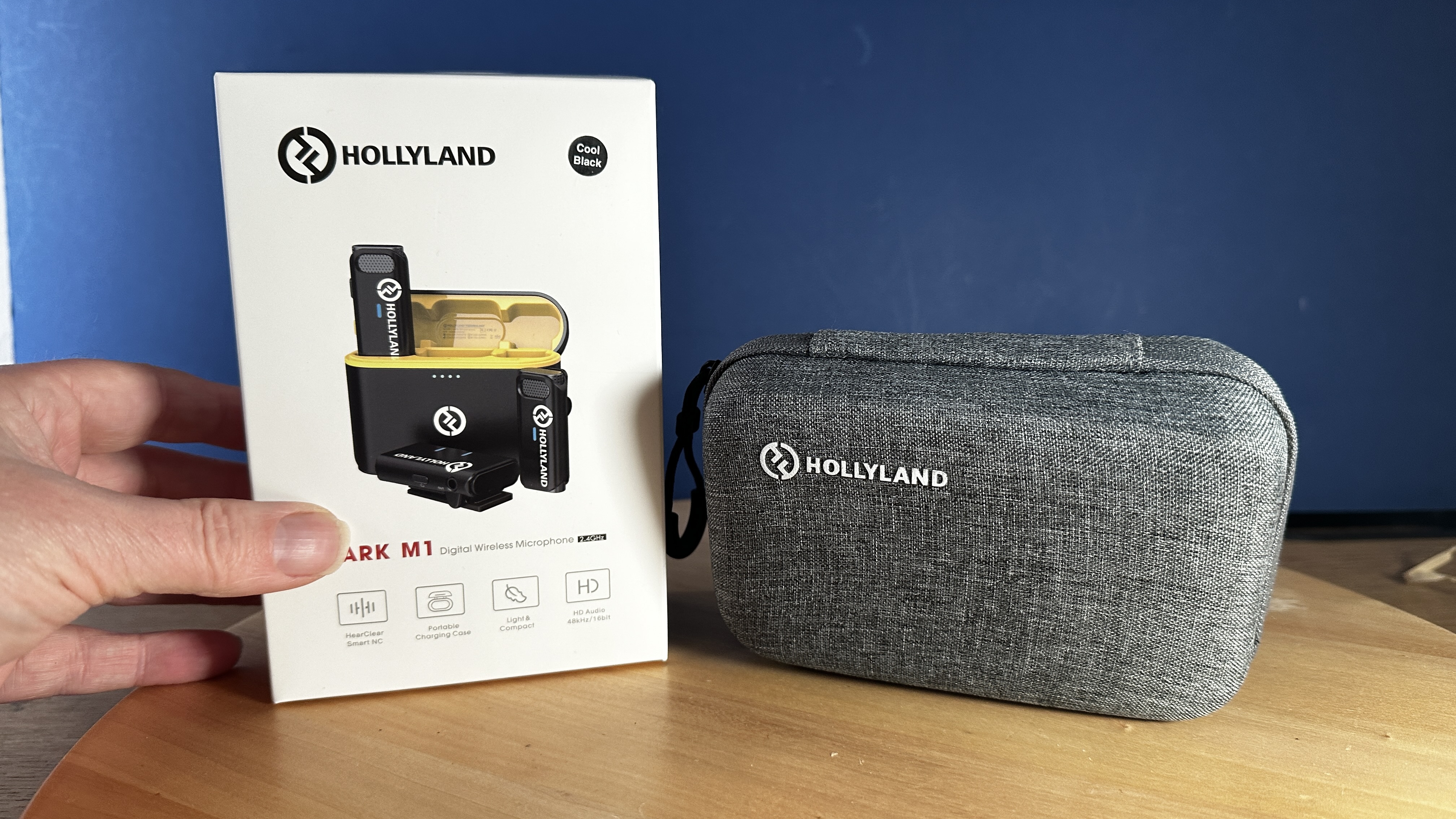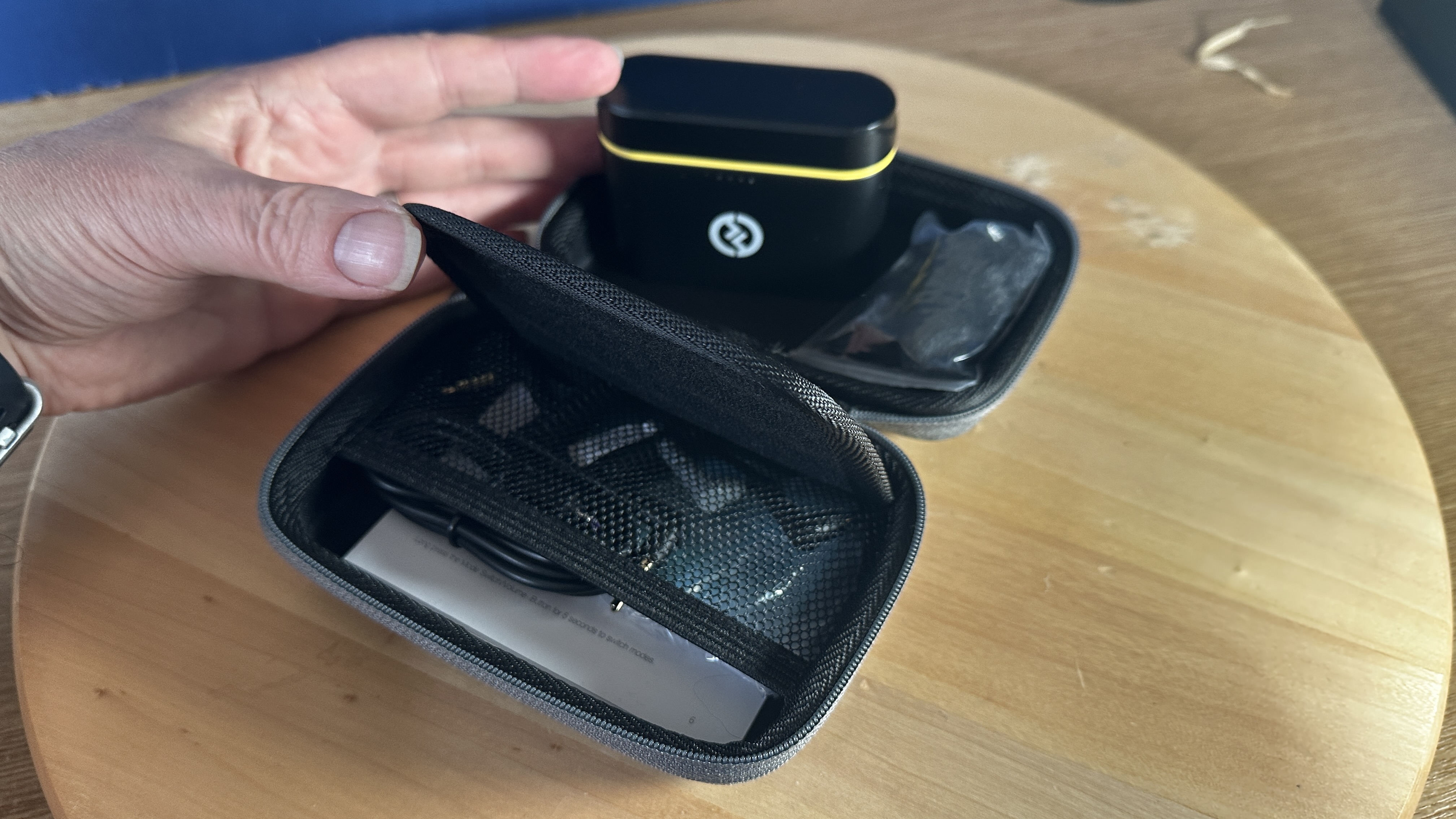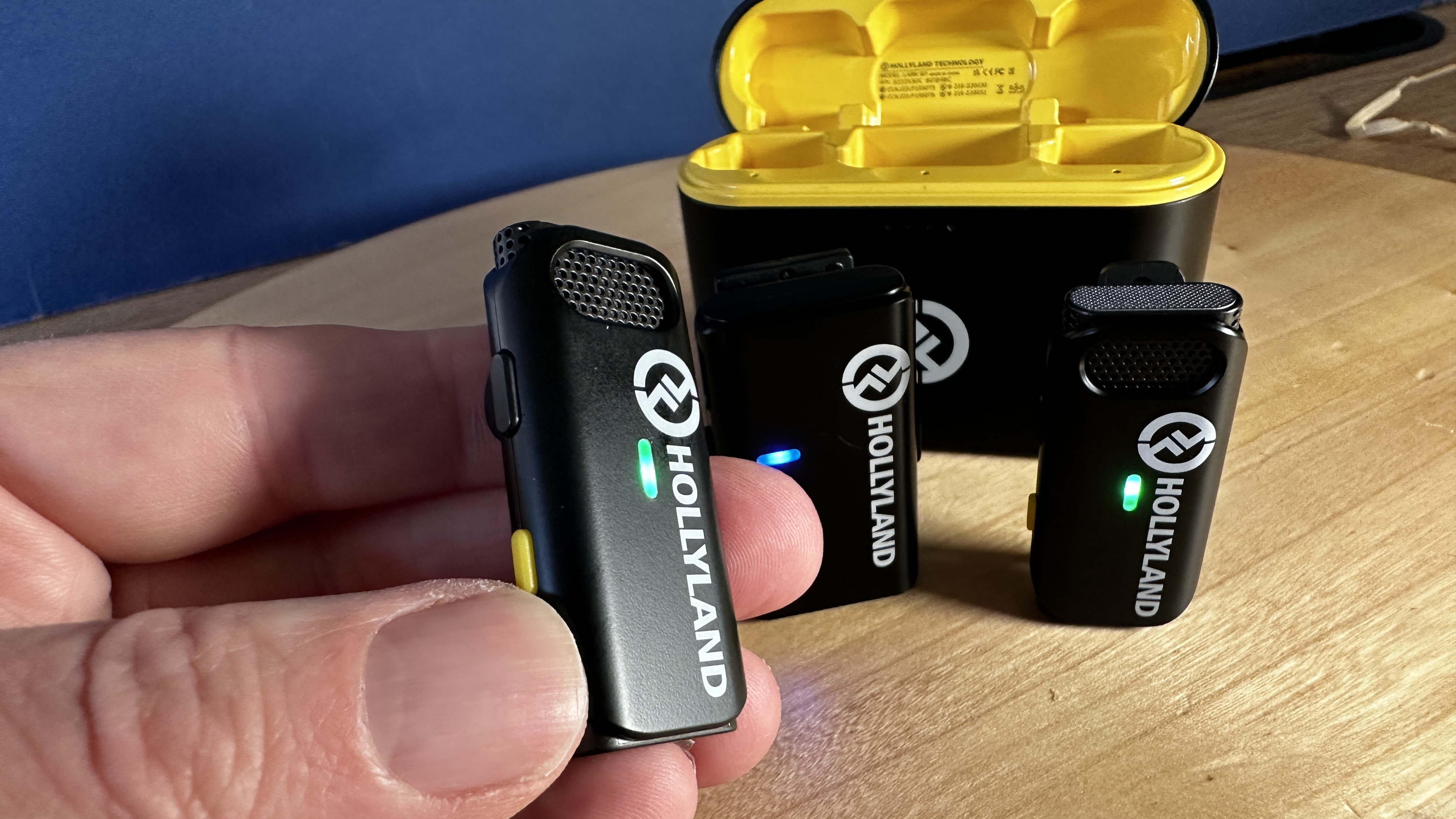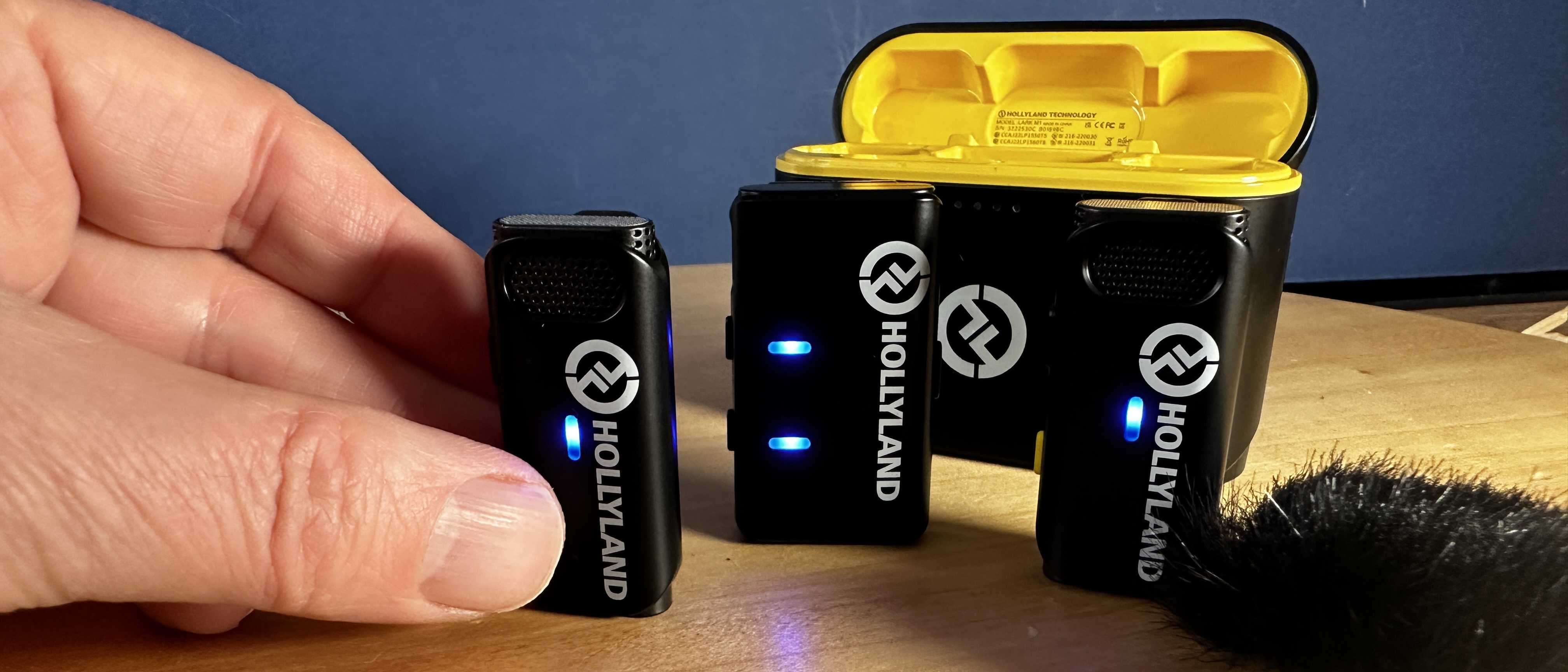Digital Camera World Verdict
If you’re new to the wonderful world of wireless mics then we can highly recommend the Hollyland Lark M1 Duo Digital Wireless Microphone. There’s also a solo version available if you only need a transmitter instead two. Compared to similar mics this kit is reasonably priced and it even outperforms more expensive mics when it comes to broadcasting at a distance without losing the signal between the transmitter and the receiver.
Pros
- +
Charge all units simultaneously
- +
Long distance transmission
- +
Negligible latency
- +
Effective noise reduction
- +
No dropout
Cons
- -
Don't forget to remove blue tape from the mics
Why you can trust Digital Camera World
Whether you are looking for the best lavalier microphone or the best microphone for vlogging and filmmaking, there are certainly a lot of choices in how to get the best sound quality and ease of use for your needs.
In the last year or so we’ve reviewed a series of wireless microphone kits including the Joby Wavo AIR, the Blink 500 Pro, and the SmallRig Forevala W60. After testing the W60 the SmallRig became my ‘go-to’ mic kit when it came to recording other video reviews due to its ability to transmit a strong clear signal from a distance. However, that mic at a distance of around 17 meters the W60 could suffer from signal drop out when I turned away from the camera and the transmitter lost line of sight with the receiver. This would cause my voice to cut out.
The Lark M1 is a wireless mic set that may not look as slick and professional as the SmallRig Forevala W60 but looks aren’t everything. The Lark M1 outperforms all the wireless mics I’ve mentioned when it comes to broadcasting a clean clear signal from a distance without the dreaded signal dropout - even when I turn my back to the camera.
Specifications

Transmission Range: 650ft(200m)
Audio: 48kHz/16bi
Wireless Transmission: 2.4GHz Adaptive Frequency Hopping (AFH)
Maximum SPL: 110dB SPL
Input Dynamic Range: 86dB
Latency: 20 ms
Frequency Range: 20Hz~20KHz
Polar pattern: Omni-directional
Dimensions:
Transmitter - 48x21.5x10 mm, (1.9”x0.85“x0.4” )
Receiver - 48.3X27.6X11mm, (1.9”×1.09”×0.43”)
Charging Case: 83x60x30 mm, (3.3”x2.36”x1.1”)
Weight:
Transmitter - 11.8g, (0.4oz)
Receiver -RX: 17.5g, (0.62oz)
Charging Case: 80g, (2.8oz)
Battery life: 8 hours
Key Features

The Lark M1 ships with a compact case that contains two transmitters and one receiver. The case protects the mics and the transmitter as well as enables you to charge all three units simultaneously from one USB-C cable (though you can also charge the units independently through their own USB-C port). As a result, all three devices are fully charged and ready to perform for the duration of your shoot.

The mics themselves are light (0.4 oz, 11.8 g) and thin (less than 1 cm/ 0.4”) which makes them easy to clip onto a subject’s shirt without bothering them. A welcome key feature is an option to activate the noise-canceling HearClear feature which is designed to reduce distracting background noise. More on that in the Performance section.
The transmitters’ mic broadcasts a high-quality signal using LC3 Codec technology, which gives an enhanced sampling rate of up to 48kHZ/16 bit. Both transmitters contain an omnidirectional mic to ensure that your voice is recorded regardless of the angle that they are clipped on.
Build & Handling

The Lark M1’s charging case, transmitters, and receiver are packed in a hard and protective grey carry case that unzips to reveal its contents. The case also has a handy pouch to hold and organize a USB-C charging cable and a couple of 3.5mm patch cables to connect the receiver to devices such as a DSLR. To connect the receiver to an iPhone you’ll need to buy a 3.5mm to Lightning port cable. An Android-compatible cable is also available. Inside the grey case, you’ll find a couple of fluffy windshields that you can clip onto the transmitters if you’re shooting outdoors in blustery conditions.

The charging case, transmitters, and receiver are all made of lightweight black plastic (other colors are available) which is brightened up by a flash of yellow around the base of the lid and in the case’s interior. When you flip open the lid three charging lights pulse to indicate that each device in the kit is fully charged. There’s also a series of four charging indicator lights on the front of the case so you can quickly tell if the contents need a top-up charge.
We shot for three hours using one transmitter and the receiver and by the end of the shoot three of the four charging indicator lights were still on, so there seems little danger of running out of power on a typical shoot. The transmitters and receivers lack the LCD displays found in wireless kits such as the Saramonic Blink500 Pro B2 which could help explain their battery longevity.
Performance

When I first took the transmitter and the receiver out of the charging case they both powered up automatically indicated by a blue light on each device. They were instantly paired too, so there was no need to faff around looking for pairing instructions.
However, after a quick test recording on my iPhone 14 Pro Max I was disappointed in the sound quality that I captured. My voice sounded very muffled. Fortunately, I quickly realized that I hadn’t unpeeled a small piece of sticky blue transport tape from the end of the transmitter. After that, the audio recording sounds crisp and clear.
I then took the Lark M1 on a proper shoot. I used it to record my voice as I tested the newly released Hobolite Avant LED light. I liked the way that I could quickly whip the transmitter out of the case, clip it on my shirt, and then plug the receiver into my iPhone. I was then able to walk and talk freely as I put the Avant through its paces.
On reviewing the footage I was impressed with the clean clear quality of the sound. Unlike many wireless mics, there was no noticeable latency (delay) between my lips moving and the timing of the audio. The kit specification says there’s a latency of 20 ms but this could be considered to be negligible when you watch the footage.
The Lark M1 has a receiver with a + and a - button that you can tap to choose 3 input recording levels. The highest level sounded a little too loud so I recorded everything from then on using the middle-level setting. Check out this review’s supporting video to hear the mic in action.
Keen to check out the mic’s noise-canceling HearClear feature I left the studio and found a noisier location. A quick tap on the transmitter’s yellow button turned its blue light to yellow, indicating it was now in noise-canceling mode. If you listen to the test video you should be impressed at how effective this feature is at removing background ambient noise such as chattering students. The only downside to using noise canceling is that the main subject’s voice can sound a bit thinner.
My final test was to see how far away I could talk via the transmitter and still be heard. I asked around for the longest corridor in the building and was led to a massive flight of stairs. To my amazement I was able to walk to the bottom of the stairs and still be completely audible - even when I turned away from the camera and the transmitter lost line of sight with the receiver. No other mic I’ve tested would have performed as well in this scenario.
Verdict
The Lark M1 stands out from the wireless mic crowd thanks to its ability to transmit and receive crystal clear 16-bit audio for a long duration at a distance without latency or signal dropout. The effective HearClear noise-canceling feature means that you won’t need to spend time reducing unwanted background noise in a post-production app such as Premiere Pro. Highly recommended!
George has been freelancing as a photo fixing and creative tutorial writer since 2002, working for award winning titles such as Digital Camera, PhotoPlus, N-Photo and Practical Photoshop. He's expert in communicating the ins and outs of Photoshop and Lightroom, as well as producing video production tutorials on Final Cut Pro and iMovie for magazines such as iCreate and Mac Format. He also produces regular and exclusive Photoshop CC tutorials for his YouTube channel.



